Last week we wrapped up our right heart blog series. Be sure to keep an eye out for our Right Heart E-Book that will be available soon!
This week, we are kicking off our mitral regurgitation (MR) blog series! The ASE, recently released updated guidelines, for the proper methods to quantify MR. We at CardioServ, want to help break it down, into a more enjoyable learning process. Our goal is to help you, incorporate these methods into daily scanning practices! We look forward to feedback and comments, as we are all here to learn and grow together!
In order to identify pathology of a valve, we must be familiar with the basic anatomy first! Can you name five components of the mitral valve apparatus? Read on, and master mitral valve anatomy!
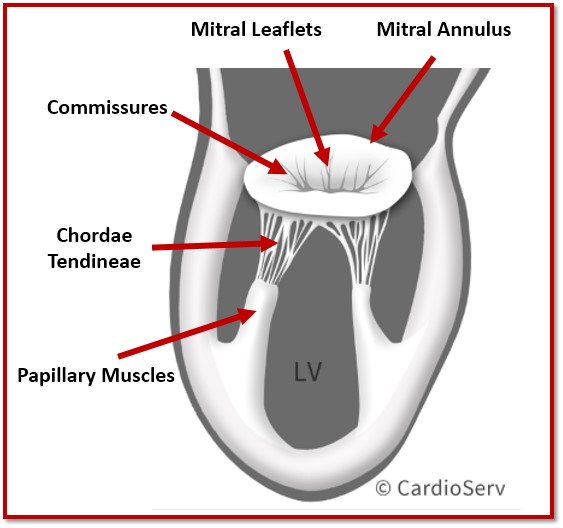
1. Mitral Annulus
2. Mitral Leaflets
3. Commissures
4. Chordae Tendinae
5. Papillary Muscles
Mitral Annulus: Anatomical structure that separates the LV & LA
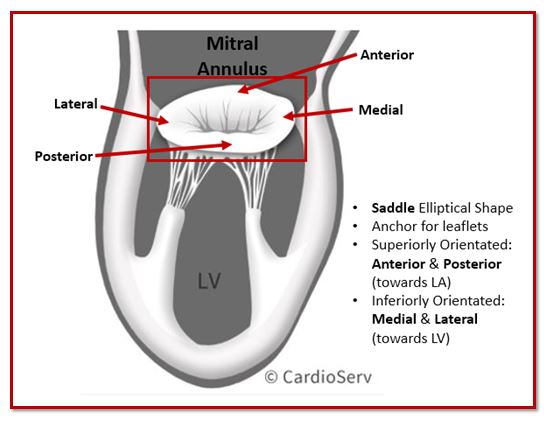
Mitral Leaflets & Scallops: Thin and pliable leaflets that contain scallops which represent segmental markers.
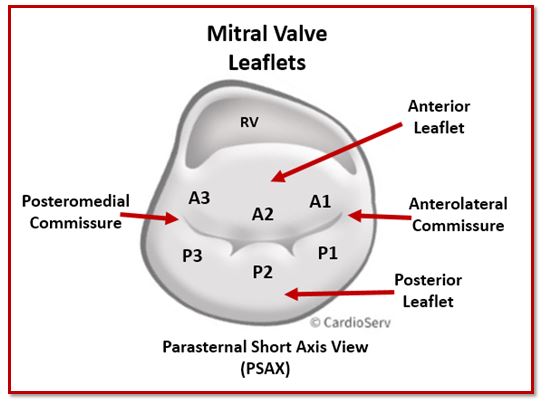
Commissures: 2 specific sites where the leaflets insert and join into mitral annulus
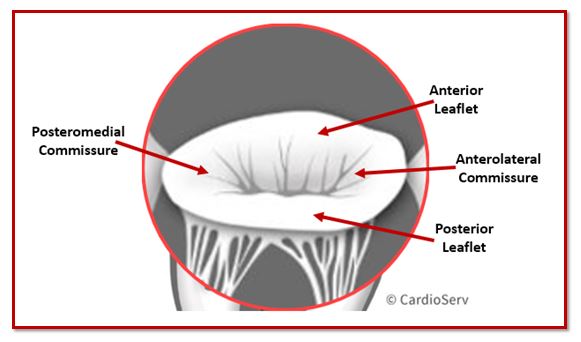
Chordae Tendinae: Fibrous strings that attach specific portions of mitral leaflets to papillary muscle tips
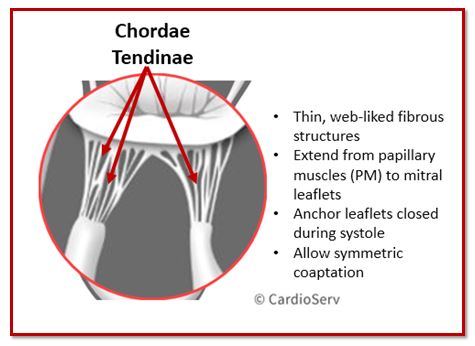
Three classified types of chordae tendinae based on location of insertion: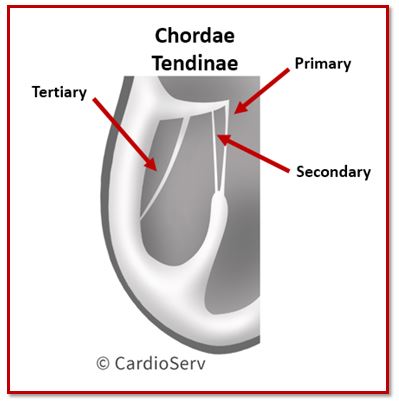
Papillary Muscles: Large trabeculae muscles that branch from 1/3rd of LV, connecting chordae to mitral leaflets
2 papillary muscles:
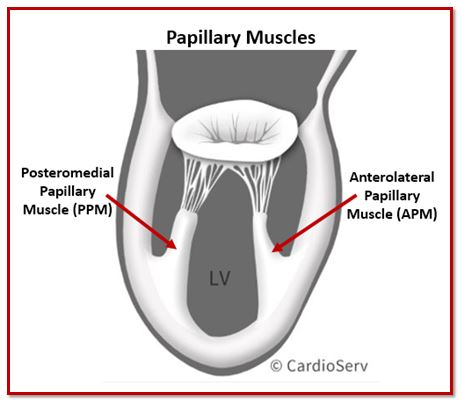
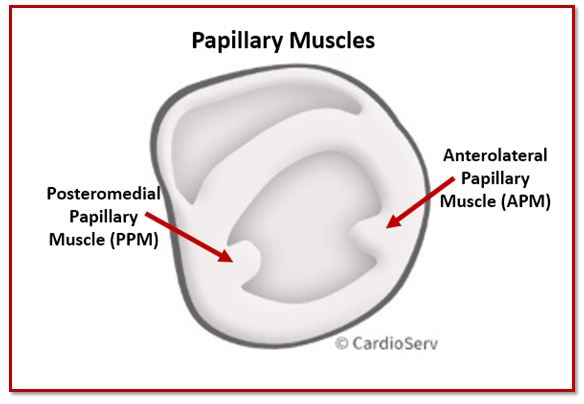
The mitral apparatus has very specific details that make up the large picture of the ‘mitral valve’. If we zoom in on the mitral leaflets from the atrial surface, we can identify two zones that are used for describing location of pathology seen.
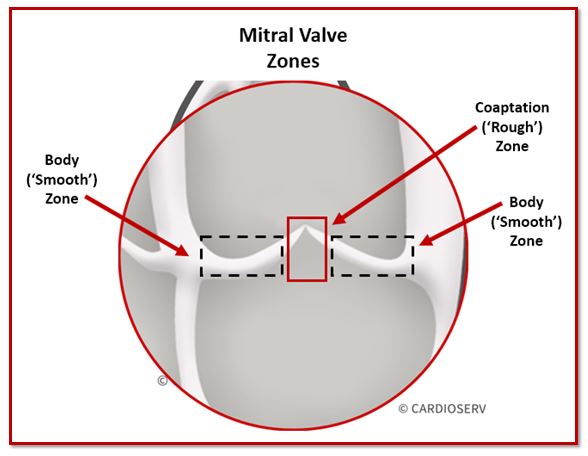
This week, we reviewed mitral valve anatomy, to lay the foundation for our in-depth review of quantification of mitral valve regurgitation. You can now confidently identify 5 components of the mitral valve apparatus! Join us next week, as we start our discussion on correct scanning techniques for the mitral valve! We look forward to hearing feedback and comments from our readers!
 Andrea Fields MHA, RDCS
Andrea Fields MHA, RDCS
Stay Connected: LinkedIn, Facebook, Twitter, Instagram
References:
Prokšelj, K. (2015). Echocardiography Of The Mitral Valve. International Symposium MITRAL VALVE DISEASES IN CHILDREN AND ADULTS. doi:10.5644/pi2017.168.03
Zoghbi, W. A., MD, Adams, D., RCS, RDCS, FASE, & Bonow, R. O., MD. (2017). Recommendations for Noninvasive Evaluation of Native Valvular Regurgitation. JASE,30(4), 318-334. Retrieved June 6, 2017.
Zamorano, J. L., MD, & Badano, L. P. (2011). EAE/ASE Recommendations for the Use of Echocardiography in New Transcather Interventions for Valvular Heart Disease. JASE,24(9), 957-960. Retrieved June 6, 2017.




Jun
2017
Jun
2017
May
2018
May
2018
Apr
2020
Dec
2020
Jun
2017
Jun
2017
Jun
2017
Jun
2017
Jun
2017
Jun
2017
Jun
2017
Jun
2017
Jun
2017
Aug
2017
Aug
2017
Aug
2017
Aug
2017
Aug
2017
Sep
2017
Sep
2017
Sep
2017
Sep
2017
Sep
2017
Feb
2018
Nov
2018
Nov
2018
Dec
2018
Jul
2020
Aug
2020
Nov
2020